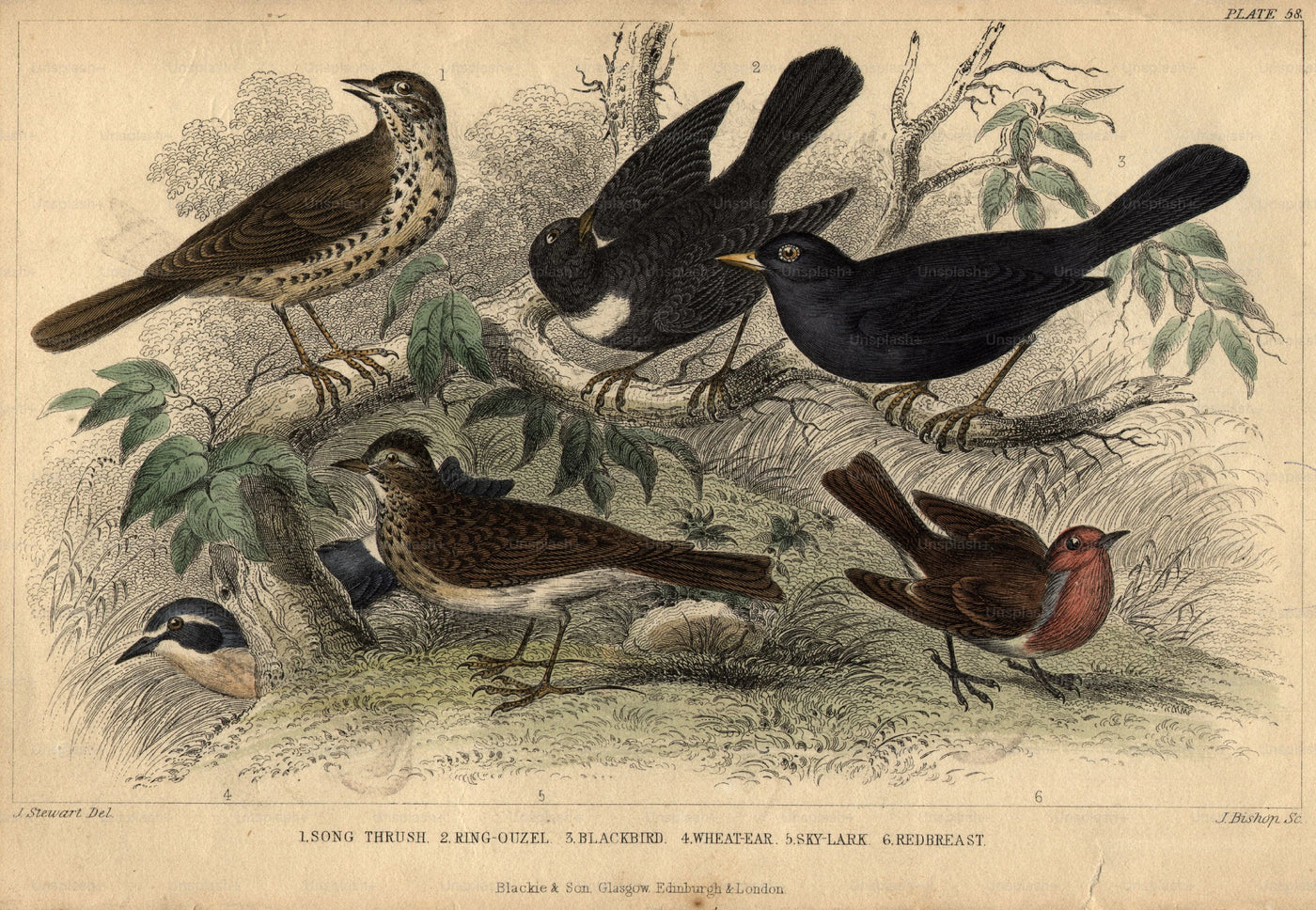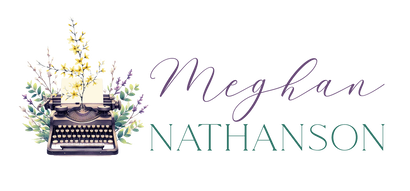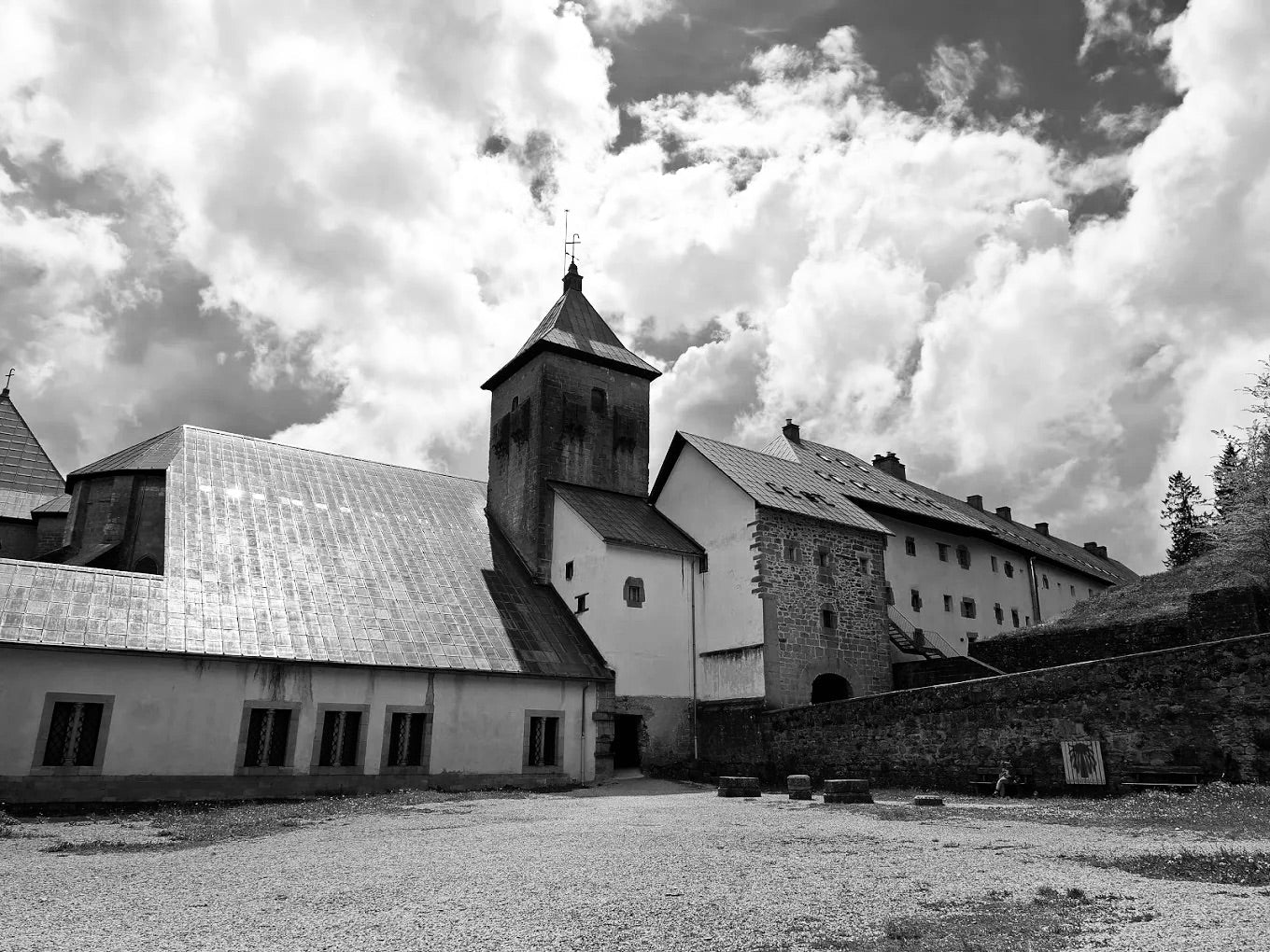
The next book I thought I would read was in pristine condition and sat on a shelf in my dining room for many years. I’ve never more than opened it, thumbed through it, and returned it to its place next to well-used copies of Think Like Leonardo DaVinci and Ignore Everybody,the pages of which are worn with pencil marks and coffee stains. I purchased the eggshell blue book when Jonah and Adrian were chicks themselves, accustomed to rising at dawn right along with the whistles and chirps that narrate the daily lighting up of the world. It was a work I thought might explain the enigmatic nature of birds and their seeming capacity to coax the sun right up over the horizon—a celebration of this cyclic expression of the earth anew.
The cover image is a songbird grasping a musical note in its beak, perched on a leafy branch, and donning colorful feathers. It’s appealing in the same way as a freshly painted watercolor, with luscious combinations of peacock greens and blues blended into a burst of orange for the breast of the bird. The background is a musical score sketched out on the pale blue and presumably a transcription of sounds passed through a syrinx—the vocal organ of birds, situated, “at or near the bifurcation of the trachea into the bronchi,” a mechanism and orientation I knew nothing about prior to my reading. The combination of imagery on the cover is intriguing and seems to promise a lively interior of engaging language and descriptions. My hope is for a revelation of the biology and social history of birds, perhaps given through engaging stories and anecdotes of field research.
Although the preface is a quick read with a charming narrator, on the following pages I soon discover that to absorb the contents, more will be required of me than I’m accustomed to—especially if I’m committed to reading the book cover to cover and not in smaller increments. Clearly there will be a narrative, but it is thick with the accompaniment of Latin phrases and long nuanced descriptions of research methodology and historical context. The threat of tedium and incomplete comprehension of highly academic wording looms as I consider whether I should change course and read a memoir instead. There is one that I recently purchased sitting on the top of a pile at the base of the stairs that go up to my studio. It was mentioned on a list I follow, and just today popped up again from a second source.
A sign to move in a different direction?
An excuse to uphold the status quo?
This, I’ll have to discern.
Flipping through to the end of the book, I notice a lengthy index and citing of sources. This gives me some comfort that the pages are a tiny bit less immense than anticipated. With my sharpened pencil and tucked by the windowsill on the orange bench, I dive in, making little brackets around initial phrases that stand out. This helps me settle into the commitment I’ve made; it is also something I do whenever and whatever I’m reading.
Sometimes I punctuate ideas that really matter in the context of the subject. Often, I just enjoy setting apart language that transcends its situation, creating a sort-of poetry all its own. This book is ripe with those types of phrases.
Beauty goes on through habit, not accident.
The world is blessed, and birds are in it.
The song is there, “to soften the sadness of the dark.”
Science can still listen more closely,
before it retreats into the safety of measurement.
“Nature,” I respond, “is not a business.”
I’m enthralled by those last two lines most of all but won’t arrive at them for many days to come.
Re-reading single sentences multiple times and for clearer understanding becomes a consistent (and needed) approach. It becomes a method for ingesting and venturing to understand a dense and somewhat foreign language that is the history, research and musings of music meets ornithology. The interspersing of musical scores throughout the text only emphasizes my need to focus and reminds me why I’m here.
Challenging the path of least resistance that is the absorption of whatever happens to cross my path is my aspiration. Trudging through these pages (at least initially) is venturing to take in more purposeful things and tests my capacity for staying with material antipodal to instant gratification. The paradox being that the longer I sit with more complex uses of words and ideas, the more awake I become to what is missing in unconscious consumption. The beauty is that soon the esoteric language becomes like a salve to pernicious thoughts that question my very worth.
Why am I not out there doing research myself or contributing to the world in some bigger way?
Reading and considering new information of a higher value becomes itself enough.
With the slower pace of my reading, I also notice that in tedium, the anticipation of neural rewards born of clicking headlines is chipped away. This makes way for sensations that have all but been forgotten, reminding me of the peace that can be discovered in the simplest acts, like washing dishes. Liberation at the hands of a slow-moving text, a slow moving life.
The singular devotion of individuals who pour themselves into small things is to be admired. They learn about a particular species of bird and observe everything about it over many years with little external reward. Then sometimes, there can be a breakthrough—the discovery of neuroplasticity by way of observation of the canary. And still there is little notice. I consider this matter in terms of the things that have largely drawn my energy and attention, none of which will likely result in such a monumental discovery. There are quiet ways of being in the world that have more of an effect than we can imagine. Ways of engaging life that draw us away from the drumbeat of what is and allow a new paradigm to emerge— ripples made in homes and hearts across the globe.
I use recordings of birdsong to foster understanding of what I’m reading. Beside me on the windowsill plays the dreamy sounds of a nightingale’s song while I peruse the pages of the book, moving through ever so slowly. At first, I’m unaware of what is happening, but then, coming down the staircase, Josh inquires what I’m listening to. As I’m describing it to him, his attention is drawn beyond me as he notices something odd happening outside the window. He points out that I have an audience. First, one, then two, then five robins have landed on the branches of a perennial next to the walkway, presumably responding to the songs I’ve been broadcasting.
--
It's rare to be home alone at dusk, especially on a day when dinner will not be needed, and my time is truly my own. The wind gusts forcefully outside, an overcast sky creates a dark and moody atmosphere inside. A tray with a winter design is still sitting on the black counter. I keep a candle and box of matches there, lighting the candle this time of year in the early mornings and just before dinner. We’re moving quickly through a box of golden beeswax candles I keep in the hall art closet. It’s been ages since anyone took any other supplies from there to paint at the kitchen table. These candles burn fast and are hard to keep in stock.
I have more to read, so that would be the obvious choice for what to do with my time; I also have several hours to fill. Standing still in the middle of the empty entryway, I close my eyes and circle around my inner world, playing out the possibilities for what will be most fulfilling to do. There is something that has been bothering me, and I’m considering whether this could be an auspicious moment to address it. It’s dirty work though, and I’ve just showered, plus there is the reading to be accomplished. Calculating the hours I have—the length of a long movie, and dinner—fast forwarding in my mind to how it might feel to resolve the issue, I decide to go to the basement storage. The problem there is that an upstairs construction job caused a vibration in the ceiling below, cascading a layer of dust like a blanket onto once precious art I have stored there.
Coming down the steps, I pass through the finished area and turn left, stopping at a sink to soak a cloth I plan to use for wiping away the buildup. Then I walk to the door at the back of the room, entering an unfinished area where I find a light switch brightening my path to the shelving in the back beyond a concrete entrance. The walls are so solid in this part of the basement, a contractor once suggested it would make for a very good storm shelter.
I’m thinking about the number of occasions on which I mentioned how much I disliked the idea of my work ending up in the basementand wondering whether those utterances have anything to do with the fact that art I spent hundreds of hours creating is now in this very place. The truth is, these larger works don’t exactly have to be here, but their size impacts other things I do, and this is a compromise I chose to make. Now several large pieces are covered with thin particles of plaster. The weight of knowing the situation will only get worse with time has reached its crescendo. I’m not willing to live with it this way any longer.
The good news is that I’ve already completed some organizing in the space. Besides the art, the area is filled with well-organized holiday bins, canning jars, old records, and all manner of baby gear for the next generation. There is a stack of items I’ve known I would need to donate, recycle, or throw away. I begin by moving these items out to clear the space. Then, I decide to survey the damage. Using the damp cloth, I place my finger into the center and begin moving it across the top of one of the more beloved works—a lovely girl in a green hoody hugging a tree. To my surprise, wiping away the dust, I discover the paper is made clean and shines brightly with the deep rich colors I had originally chosen for the work. It appears this piece is salvageable.
Next, I decide to utilize other tools including a vacuum, broom and dustpan and get to work tidying up the entire space which feels like a step that will somehow elevate the situation. I sense my place in the world—all alone in a big house, on the bottom-most concrete floor, on a very gusty day. We’re still on the furthest edge of winter here, and I’m in the shadowy space taking on the mystifying aspect of time’s passing.
After some big sweeping and dusting, I return to the art, this time to another piece that once had a home in a building downtown. It’s lost its zeal, and I imagine what it would be like to just let it go. It’s had its moment in time and could be rolled up and put into a garbage bag. Instead, I fold it over twice to conserve space. This way I can better access the original piece and finish wiping it down, eventually covering it with a pretty bed sheet.
In not more than an hour, I bring the space into an improved form. Although it is not an ideal location for art, there is a greater reverence present for a part of me I poured into these pieces that exist for a purpose.
Two stories up, I stop in the laundry room and strip off my dusty clothes and pull-on fresh ones. I walk down the dark hallway to the bathroom where I slowly wash my hands and face with warm soapy water and then head back downstairs. The room is glowing with candlelight and the couch is lit by a lamp on the table behind it. It’s an inviting place to take my book to curl up and read. It will be several more days before I finish learning about the birds. And yet, I already know, I’ll be glad I did. ✨
Subscribe to my mailing list!
Leave a comment (all fields required)
Comments will be approved before showing up.


